Misha Mahowald: genesis of Telluride Neuromorphic Cognition Engineering workshop:
-
-
Degeneracy is the ability of elements that are structurally different to perform the same function or yield the same output, and has been shown throughout biological systems (Edelman and Gally, 2001)
-
Computational Approaches to Mapping and Modeling Brain Networks - Talk by Olaf Sporns:
-
RoomBots - by Auke Ijspeert. #Robot
Animal Locomotion – Learning from Robots - talk by Auke Ijspeert (2018):
-
Synthetic neural modeling applied to a real-world artifact - by Gerald Edelman et.al (1992)
https://www.pnas.org/content/pnas/89/15/7267.full.pdf
"The Neurosciences Institute was a unique place. The director was Nobel Laureate Gerald Edelman. In addition to his work in immunology, which led to the Nobel Prize, he introduced a theory of the nervous system called Neural Darwinism: The Theory of Neuronal Group Selection (Edelman, 1987, 1993). The theory suggested that there was selection of neural circuits during development through synaptic pruning, and selection of groups of neurons during adulthood through reentrant connections. Important for neurorobotics was the notion of value systems to tie environmental signals to neuronal groups, which led to the selection of behaviors important for survival. Because of this linkage, or as Edelman would say, “The brain is embodied, and the body is embedded in the environment,” their group developed the Darwin series of Brain-Based Devices (Reeke et al., 1990; Edelman et al., 1992). Another phrase that drove this work, was “the world is an unlabeled place,” which meant that perceptual categories must be selected through experience, rather than supervision. These Brain-Based Devices were robots3 with large-scale neural networks controlling their behavior (Figure 2). However, these were not the feedforward input layer→hidden layers→output layer neural networks that were popular then and became the deep neural networks of today. The Brain-Based Device’s neural networks had anatomical details that resembled biological neural networks. There were sensory streams, top-down connections, long-range connections between regions that were bi-directional, as well as local lateral excitation and inhibition within brain regions."
from https://www.frontiersin.org/articles/10.3389/fnbot.2018.00042/full -
Interviews with Gerald Edelman: https://en.wikipedia.org/wiki/Gerald_Edelman
The theory of neural Darwinism:
Putting the mind back in nature:
Conscious artifacts
Brain based device
-
“The brain is embodied, and the body is embedded in the environment”
- Gerald M.Edelman -
“Variations of Incomplete Open Cubes” - by Sol LeWitt (1974): http://socks-studio.com/2016/06/15/irrational-thoughts-should-be-followed-absolutely-and-logically-sol-lewitts-variations-of-incomplete-open-cubes-1974/ #Art #Architecture
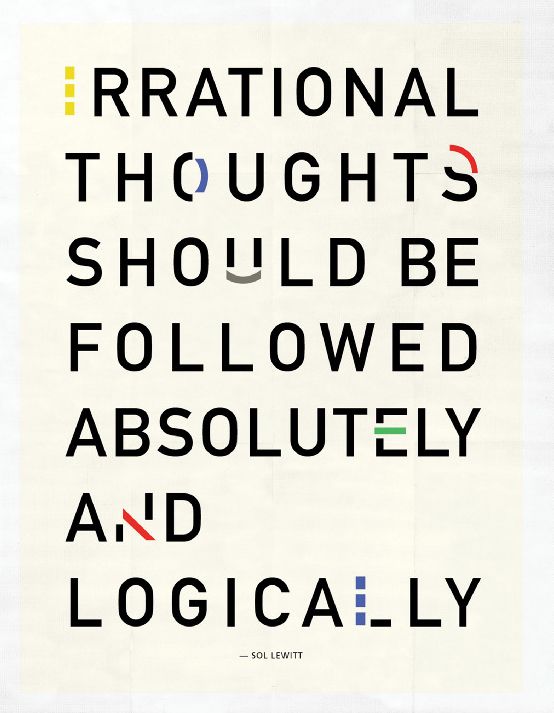
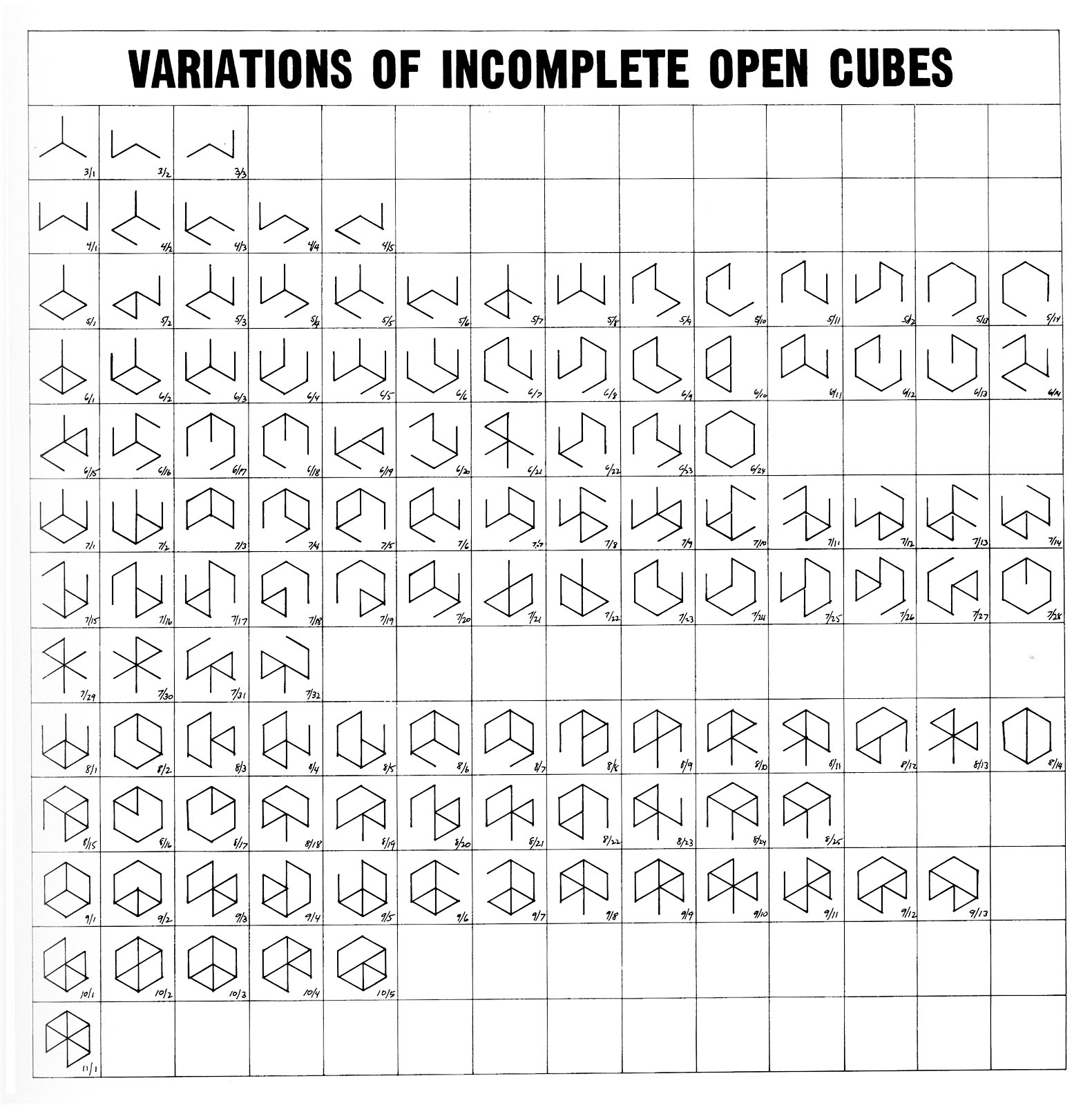
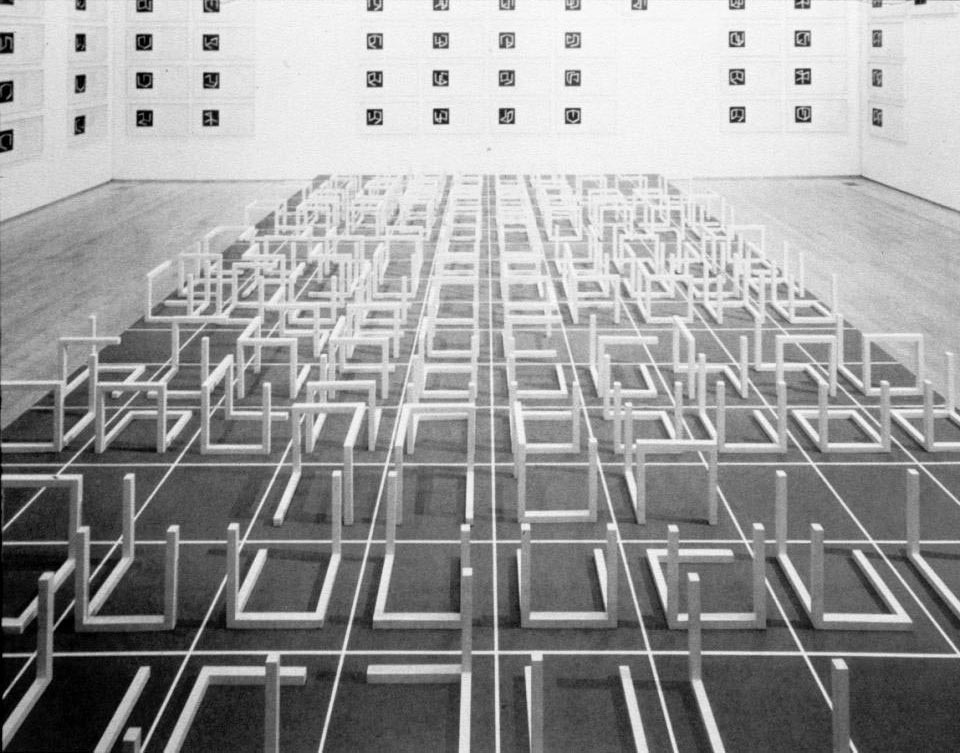
-
MEART: The semi-living artist (2007): https://www.frontiersin.org/articles/10.3389/neuro.12.005.2007/full #Robot
-
Deus Ex Machina Sapiens: Minding the Machine: https://books.google.de/books?id=jneIT5ElvIsC #Robot #ALife #Book
-
Neurorobotics—A Thriving Community and a Promising Pathway Toward Intelligent Cognitive Robots: https://www.frontiersin.org/articles/10.3389/fnbot.2018.00042/full
Neurorobots are robots whose control has been modeled after some aspect of the brain. Since the brain is so closely coupled to the body and situated in the environment, Neurorobots can be a powerful tool for studying neural function in a holistic fashion. It may also be a means to develop autonomous systems that have some level of biological intelligence. The present article provides my perspective on this field, points out some of the landmark events, and discusses its future potential.
"When I was at the Neurosciences Institute, Edelman would sometimes ask our group “If I held a gun to your head and asked you what is the most important feature of the brain, what would be your answer?” Eugene Izhikevich, who was my co-worker at the time answered the neuron. My answer was always anatomy."
-
Bristol Robotics Lab - Scratchbot: http://www.robaid.com/bionics/scratchbot-robot-mimics-rats-and-navigates-with-whiskers.htm #Robot
-
The simple brain - How to mimic the behaviour of an animal? Documentary on the work of Valentino Braitenberg: #Robot
-
Interview with Robotics Researchers Hans Moravec (1997)
-
Berenson, "art lover" #Robot, 2011 - by Denis Vidal & Philippe Gaussier: https://www.businessinsider.com/berenson-robot-critiques-art-at-paris-museum-2016-2?IR=T
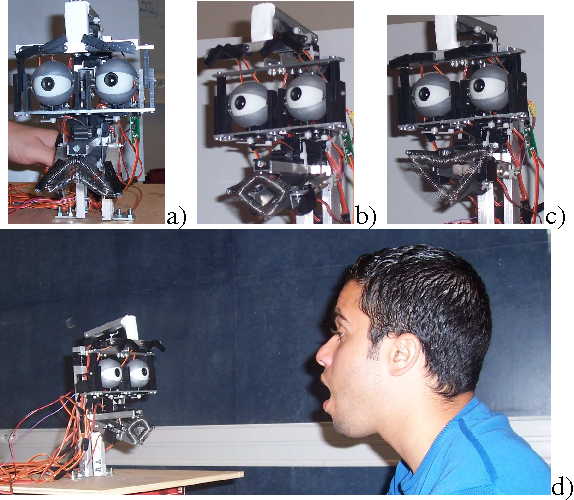

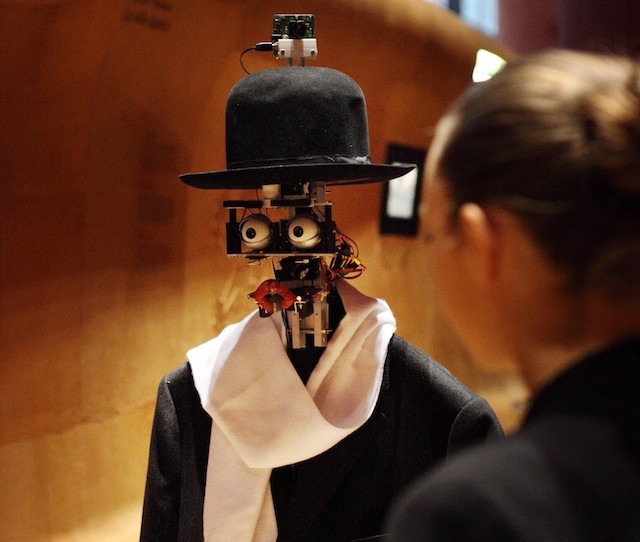
-
Photo Wake-Up: 3D Character Animation from a Single Photo:
https://grail.cs.washington.edu/projects/wakeup/ #ML #Generative
